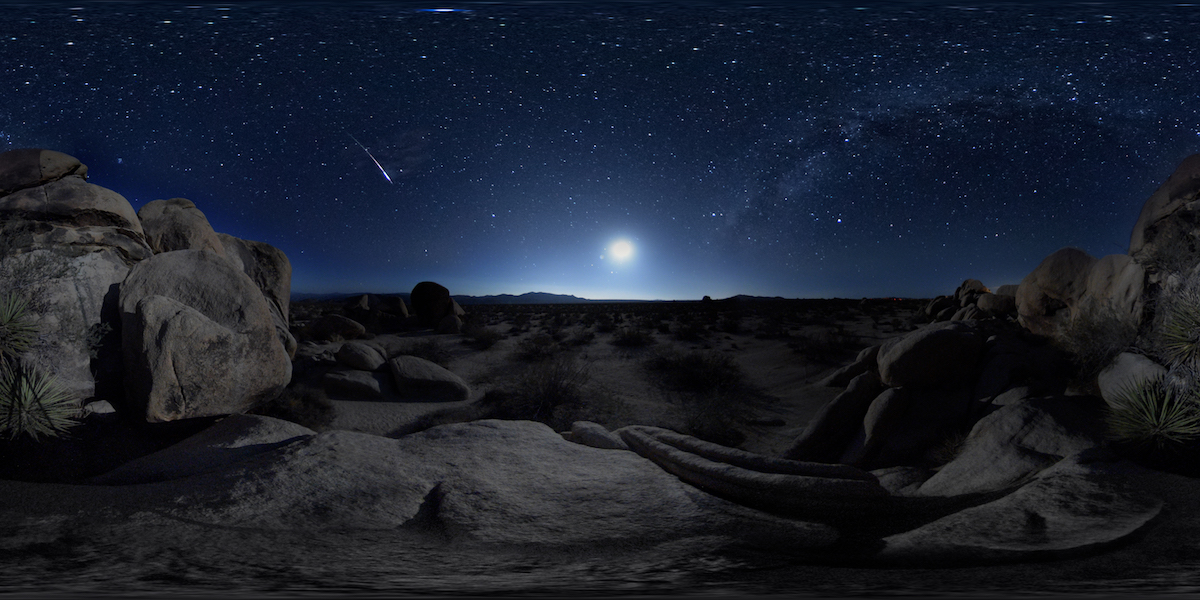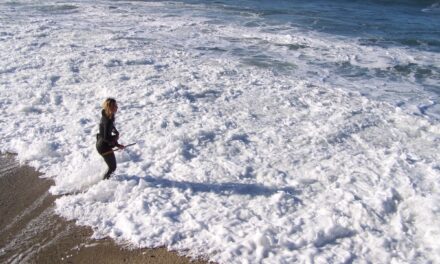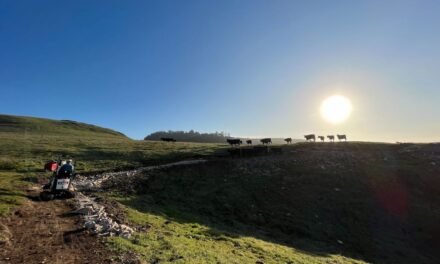- Death Valley’s Battle With Climate Extremes - 01/01/2024
- The Future of Homewood - 12/05/2023
- Kula Cloth - 10/18/2023
Three Epic Full Moon Journeys
When darkness falls, most people head inside and turn on the lights. Modern civilization protects us from cold and dark. Even while camping, most of us curl up in the home we carried not long after sunset.
But once a month, when the blush of sunset stains the western sky, a globe of silver rises to the east. The full moon traces the sun’s arc across the night sky, illuminating the world. Coyotes gather in packs and greet it with a communal howl. Our ancestors used it to measure the world and the passage of time. Climbers and skiers complete epics under its guiding light. A familiar stroll becomes a thrilling adventure.
When the moon is perfectly aligned between our planet and the glowing ball of nuclear reaction that supports life here, it appears full. As that ball of rock travels to the opposite side of the planet on its orbit, it appears smaller and smaller until a thin smile of a crescent shines down. When earth is directly between the moon and the sun, we can’t see its light at all. A full moon is sunlight reflected from 93 million miles away on a lifeless ball of rock almost 239,000 miles away.
The day before the full moon, it appears about 50 minutes earlier, slightly smaller. The final week before full is ideal for wilderness epics because as soon as the sun sets, an almost full moon casts enough light to navigate easy terrain. Moonlight turns a desperate stumbling exit into a magical memorable adventure.
As my interests move away from what I can accomplish in the outdoors and toward what I can appreciate in the wild world, I’ve started planning trips to enjoy the full moon.
Here are my top three ways and places to enjoy a full moon.
The Kelso Dunes
The tallest Kelso Dune towers 650 feet above the surrounding terrain. The sandy slog to the top is the most popular hike in the nearly 1.6 million-acre Mojave National Preserve.
Beyond the summit lie waves of shimmering sand that stretch over 40 miles to the north. Untrammeled crests of sand form sinuous curves that travel back and forth across a zone 30-40 feet wide, like waves on the ocean. The ridges drop into hollows and rise to rounded ramps. Most of the sand was deposited between 2,400 and 9,000 years ago when a drier hotter climate exposed sediment from nearby lake beds.
The Granite and Providence Mountains funneled the windblown sediment to form the Kelso Dunes. Individual grains were tumbled smooth in their 35-mile journey. Today, when a footstep triggers a small slab avalanche at a certain angle, the dunes produce a low vibration a hiker can feel in their bones. This “booming” phenomenon is found in less than 10% of dunes on the planet.
Sunset casts a purple shadow on the Providence Mountains as a full moon rises behind their bulk. On the Kelso Dunes, its silvery light makes the expanse of sand glow, beckoning to the curious and playful. Leap off slopes, slide down chutes, roll over the edge and crawl back up a steep head wall of sand. Take off your shoes and wander barefoot for hours. Bring a sleeping bag and spend the night watching the moon cross the sky as your home spins in the vast emptiness of space.
Point Reyes National Seashore
Tomales Bay is a thin finger of water approximately 15 miles long averaging nearly one mile across, sandwiched between the mainland and the shore. Its placid protected waters and the heaving expanse of the Pacific Ocean gleam like burnished metal under a full moon, reflecting liquid silver in mesmerizing shifting patterns.
To appreciate the moonlight on water at Point Reyes National Seashore, you need to spend a night, which requires a reservation. Kayak campers can enjoy a wave-free paddle in the bay and sleep on secluded beaches. Coast and Wildcat campgrounds offer outhouses, potable water, and picnic benches all with a soundtrack of crashing waves.
Point Reyes National Seashore and the surrounding lands are home to the Coast Miwok or Tamál people, who lived in over 600 villages stretching between Bodega Bay and southern Marin county. The Tamál called the peninsula Tamál-Huyé or Coast Point. European disease and land grabs decimated their numbers and way of life. The indigenous struggle for autonomy continues today as the National Park Service often advocates for colonial era cattle preservation over native rights to their ancestral home.
European greed wreaked havoc on native animals as well. Northern elephant seals, hunted for their blubber, were believed extinct by 1884. Several years later, a Smithsonian expedition found eight of them on an island off the coast of Baja; they killed seven to study. Mexico protected the animals in 1922; the US followed several years later. Since then, the population, estimated at 200 in the 1880s, has grown to 200,000. Sometimes rescuing animals from the brink of extinction is complicated; sometimes we only need to stop killing them.
The northern elephant seal’s northern most breeding ground is on a sheltered beach below Chimney Rock in Point Reyes. In 1981, two of the lumbering blubbery mammals bred there; 30 years later almost 2,000 of their descendants haul out at the same spot every winter. If you’re lucky enough to spot them, keep your distance and leave them in peace.
White Mountain
California’s easternmost 14er has no technical routes to the summit. Any way you approach, it’s a tedious slog up a glorified road to the top of White Mountain. But the White Mountains, the first of the waves of land we call Basin and Range, drop almost 10,000 feet to the floor of the Owens Valley, beyond which rises to the steep escarpment of the Sierra Nevada.
Barcroft Field Station is perched on the shoulder of this massive mountain, in a dry expanse of rubble raked by winds. Students and scientists flock here from around the world to study the effects of high altitude and extreme conditions on life. You can hike to the top and see for yourself.
I never took altitude sickness in California seriously until I saw someone die from it at 11,300 feet in Humphreys Basin. Driving from the coast and attempting to summit the next day is a miserable and dangerous proposal. Spend some time at 10,000 feet and sleep at least one night above 7,000 feet before attempting to climb White Mountain.
Aim to summit at sunset and the reward is vermillion and lavender hues cast on over 200 miles of muscular mountain crest, stretching from the Sawtooth Range to the Whitney Zone. Turn to the east and watch a full moon creep over the inky indigo violet expanse of the Great Basin desert stretching into Nevada. Its silvery glow will guide the way back to your car.
Whether camping, climbing, paddling or simply strolling, venturing out under the full moon transforms desert, mountain and ocean adventures into mystical experiences. Don’t hide inside. Let the full moon shine on you. Seek it out and soak up the unexpected rewards.
Main Image Caption: 360° view of Perseid Meteor Shower in Mojave Desert. Photo Erik Rochmer / istockphoto
Read more by Leonie Sherman here
Full Moon Adventures













